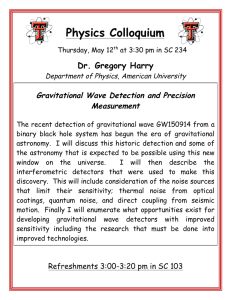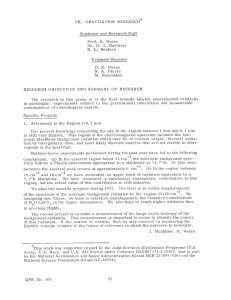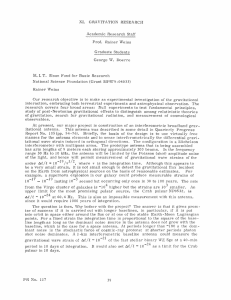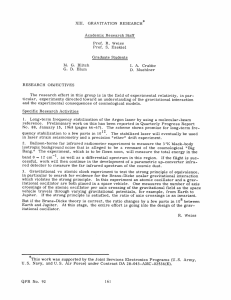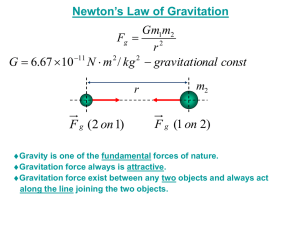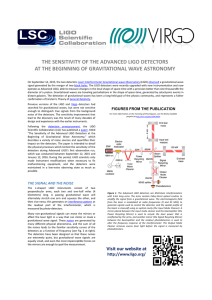XVII. GRAVITATION RESEARCH Academic and Research Staff
advertisement
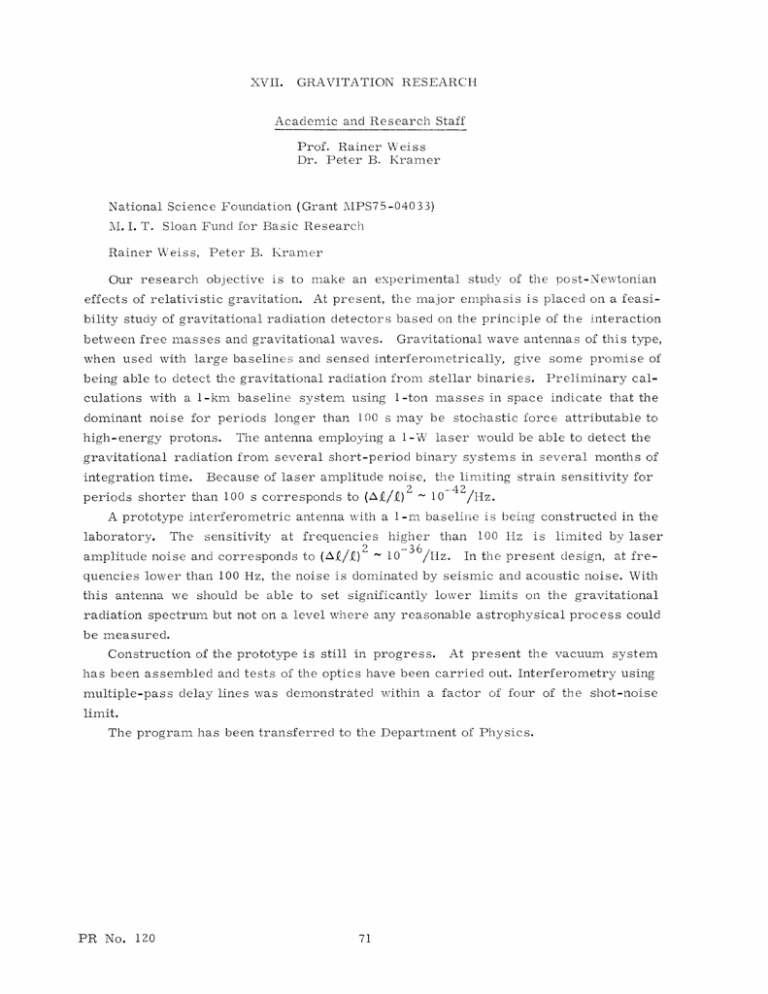
XVII. GRAVITATION RESEARCH Academic and Research Staff Prof. Rainer Weiss Dr. Peter B. Kramer National Science Foundation (Grant MPS75-04033) 1I. I. T. Sloan Fund for Basic Research Rainer Weiss, Peter B. Kramer Our research objective is study of the post-Newtonian to make an experimental effects of relativistic gravitation. At present, the major emphasis is placed on a feasi- bility study of gravitational radiation detectors based on the principle of the interaction between free masses and gravitational waves. Gravitational wave antennas of this type, when used with large baselines and sensed interferometrically, give some promise of being able to detect the gravitational radiation from stellar binaries. Preliminary cal- culations with a 1-km baseline system using 1-ton masses in space indicate that the dominant noise for periods longer than 100 s may be stochastic force attributable to high-energy protons. The antenna employing a 1-W laser would be able to detect the gravitational radiation from several short-period binary systems in several months of integration time. Because of laser amplitude noise, the limiting strain sensitivity for periods shorter than 100 s corresponds to (A£/1) 2 ~ 10-42/Hz. A prototype interferometric antenna with a 1-m baseline is being constructed in the laboratory. The sensitivity at frequencies amplitude noise and corresponds to (Ak/!) 2 higher than ~ 10_36 Hz. 100 lHz is limited by laser In the present design, at fre- quencies lower than 100 Hz, the noise is dominated by seismic and acoustic noise. With this antenna we should be able to set significantly lower limits on the gravitational radiation spectrum but not on a level where any reasonable astrophysical process could be measured. Construction of the prototype is still in progress. At present the vacuum system has been assembled and tests of the optics have been carried out. Interferometry using multiple-pass delay lines was demonstrated within a factor of four of the shot-noise limit. The program has been transferred to the Department of Physics. PR No. 120

